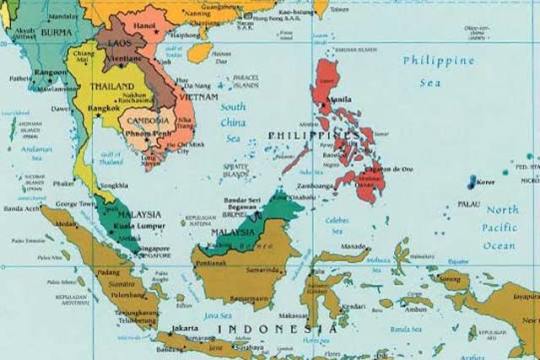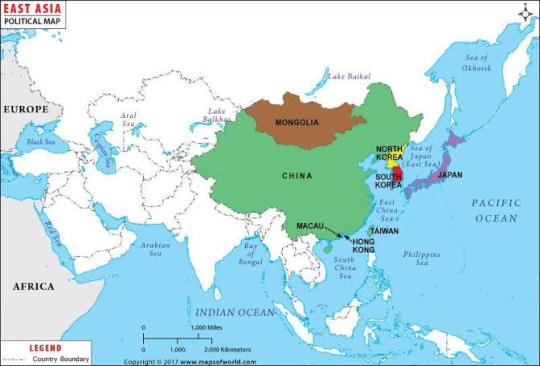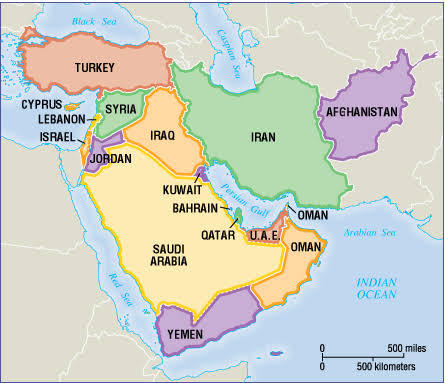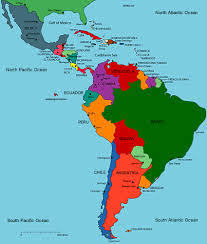#miguel is only interacting with the concept of canon as a way to understand and conceptualise these pattern events and the damage that can
Explore tagged Tumblr posts
Text
seeing miguel takes that make u say aloud HE DOES NOT KNOW HE IS A FICTIONAL CHARACTER IN A STORY WHERE THE PLOT IS CONSTRUCTED TO ILLUSTRATE A CERTAIN POINT/MEANING BRO 😭
#why can’t Miguel recognise the importance of trying and failing to save the police captain#BECAUSE HE DOES NOT KNOW HE IS A FICTIONAL CHARACTER HE DOES NOT KNOW ABOUT CHARACTER ARCS#ALL HE SEES ARE REPEATING PATTERNS ACROSS THE MULTIVERSE#HE DOES NOT KNOW HES IN A STORY GUYS COME ON STAY WITH ME HERE 😭#tunes talks spiderverse#also like on the meta level the ENTIRE thing his character is being used to critique/question is what story elements have been used the irl#writers of spiderman to ‘legitimise’ a spiderman. what do those repeating patterns say about us that women die for Spider-Man’s pain#etc etc what does it say about society irl that miles was seen as such a challenge to the spiderman mythos by virtue of being a black kid#you’re having a character In the STORY look at those repeating patterns and ascribe it as fate BECAUSE WHY WOULD YOU NOT YOU DONT KNOW YOU#ARE FICTIONAL#but what highlighting those patterns asks US the audience to question is why is that suffering necessary for a spiderman story why does it#always have to play out the same#why CANT miles save his father#miguel is only interacting with the concept of canon as a way to understand and conceptualise these pattern events and the damage that can#be done to the dimensions/multiverse when certain parameters are met#he does not KNOW about the meta commentary guys PLEASE 🚬
20 notes
·
View notes
Text
I'm sorry but I can't stop thinking about a certain angsty idea

Like pretty sure this is implying getting married is a canon event? But in a way, doesn't that kind of, really strip the choice and actual love and magic out of it? Or, could you at least understand the idea of a Spiderperson who may feel that way? Did you genuinely fall in love with someone if it was "supposed" to happen? And the universe could fall apart if you don't so you arent really even given a choice to say no? Isn't that like having a preprogrammed robot instead of a true lover?
Still kinda obsessed with the concept of a Spider Reader where you didn't get scouted by Miguel until after you had already lost your loved ones, but, it's clear that some Spiders are scouted before they have all of their events (Pav), and, I can't stop thinking about, you're in the Spider Society and making friends and having fun and stuff and you're. Still supposed to get married or have a relationship or something and you're just, completely avoiding having anything at all, not even dating anyone, nothing really feels natural to you and you just don't really want anything?
Months and months and months pass and you've turned multiple people down in your home dimension and Spiders at the Society are told not to interact with you in certain ways, which becomes overboard when no one ever seems to want to hug you or even high five you or touch you at all (because "oh don't let them get a crush on you, they can't break canon" or some dumb paranoia) which just eventually develops into isolating you from the Spider Society, and they all think, "ok good they'll spend more time at home and then start the route for this canon event and we can talk to them again" but it just. Doesn't happen. You're starting to show up to the Society less and less but the only thing that changes when you get back home is a loneliness that you fill with a pet and some platonic friends
Peter B is trying to "subtly" nudge you. "Ya know kid, aren't you in your 20s now? Isn't it time you try and, I dunno, get into college or something? You've got so much potential!" as he willingly omits how he met his wife in college and maybe it's in the model that you could meet your spouse there too as a potential option
But I like the idea and already lowkey established concept that canon changes and has tweaks here and there and can be bent in certain ways so, imagine like, idk, imagine Reader already being with the person who is supposed to your soul mate, and, you find out about The Model or whatever, the Arachno Humanoid Poly Mutiverse or whatever, and you just realize kind of on accident that, oh having a relationship at all is kind of just another prison for you to be in, huh? Another choice stripped away from you, another thing that made you feel like a rubber stamp in existence in the weird copy/paste Spider Society. So you just. You don't intentionally bomb the relationship but you become so extremely depressed and refuse to talk about it with your SO that they actually leave you, making the choice independently, changing canon but not breaking it
But here's Miguel, which I guess you could imagine as a protective obsessive romantic figure or even platonic parental, and he's all but grinding his teeth because, as he sees it, you're not only risking completely breaking your canon which you know Would Fucking Kill You, but, why are you constantly shooting down what are supposed to be good changes for your life? No relationships? No college? No aspirations at all? Why are you not living up to your full potential? He's so frustrated because he KNOWS you could "be better than this" and that you're "supposed to" be better than this, but you just seem. Depressed and defeated. He wants you to be better because it's better for your life, your future, your safety (even if depending on preference it absolutely gets under his skin to see you with anyone else romantically or sexually)
And I have no idea how they would externally force you into some kind of relationship but, I've also thought about, alternatively, the tried and true "Reader lost their home dimension but somehow didn't disappear and lives on Earth 928B now" (the movie specifics its 928b ok, pet peeve I know, 928 is comic Miguel, 928b is ATSV movie Miguel) and eventually, somehow, your bracelet comes off one day and you're about to freak out and it's like, wait, you aren't glitching??? Why aren't you glitching? I mean, you're happy to not be in pain and flashing colors, but, this doesn't make sense? And you don't wanna tempt fate but you don't bother to get a new bracelet or, other people are around to witness this weird event and so, Miguel is immediately investigating what happened. I imagine maybe they scan you with the Go Home Machine and it's just like "ha ha yeah you're home already :)" you know like some "Dimensional Match: 928B" and the machine doesn't even activate, it just scans you with the drone, is like "yeah you're good lmao" and goes back to sleep
And now Miguel is like, you know. Understandably concerned because now there are two Spiders for Nueva York, but, also, he's just like, unbeknownst to you absolutely over the moon necause if you're technically a part of his dimension now, maybe you can complete your canon and have some sort of happy ending. But. Miguel never had his wedding either? Or at least not the "true" one, like how Peter moves on from Gwen to Mary Jane? Cue Miguel suddenly spending suspicious amounts of time on his platform in the dark looking at holograms and algorithms and asking Lyla to calculate the probability of you two maybe becoming spouses for each other
AND YOU'RE SO FUCKED IF IT SAYS YOU CAN LMAO. Cause now not only is he all the more obsessed with you (you were BROUGHT to his dimension by a miracle, can't you SEE you're destined for each other) but now it's "don't you understand? Not only are we MEANT for each other, you don't have a choice! You CANT break canon!" And he's fucking putting a finger in your face and lecturing you about how, you know what, it's ok if you're scared and you're not ready. You know why? Because you two were made for each other, and, he must have been made to be this strong so he can protect you and make decisions on your behalf, right? It's all in The Model. It's all in God's Plan. The two of you are going to get married whether you think it's the love you're fantasizing about or not, and Miguel is more than thrilled that he was essentially just handed a certified excuse to keep you all to himself on a silver platter
Also. I guess this is preferential but. Imagine if Earth 928B's solution to two Spidermen, like how Miles' "corrected" itself with getting rid of blonde Peter, what if the universe and canon just went, "actually it's all cool though cause technically one of them isn't going to technically in name be a Spider anymore, they're going to be forcibly turned into a cute little pampered house spouse" and ON GOD he's getting children out of you if you're capable of it and that ISN'T optional. He's thinking you can start at AT LEAST three babies and then talk about how many more from there? He's always wanted a large family with lots of cute little girls and boys, you know 👉👈
#yandere x reader#yandere miguel o'hara#miguel o'hara x reader#yandere spidereverse#atsv spoilers#yandere stuff#sinprompts#also separate idea but. miguel who hates how you arent maximizing your potential and#essentially kidnaps you and since he sees you as perfect tries to force perfection out of you#platonic yandere dad slash tio Miguel who says no datingg whatsoever vs romantic yan miguel who forces you to date HIM
1K notes
·
View notes
Text
DOMINANT THEMES AND STYLES LITERATURE
SOUTH EAST ASIA

This area, which embraces the region south of China and east of India, includes the modern nations of Burma, Thailand, Cambodia, Laos, Vietnam, The Philippines, Malaysia and Indonesia. The earliest historical influence came from India around the beginnings of the Christian era. At a later period, Buddhism reached mainland Southeast Asia. Its influence was a major source of traditional literature in the Buddhist countries of Southeast Asia. Vietnam, under Chinese rule, was influenced by Chinese and Indian literature. Indonesia and Malaysia were influenced by Islam and its literature. All of the countries, except for Thailand, underwent a colonial experience and each of the countries reflects in its literature and in other aspects of its culture the influence of the colonizing power, including the language of that power. Education in the foreign language was to bring with it an introduction to a foreign literature and this, in turn, was to have considerable impact upon their modern forms of literary expression. One finds, then, all the well-known literary genres of Western literature, the novel, the short story, the play, and the essay. Poetry had been the most popular form of the traditional literature over the centuries but was rigid in form. However, through increased acquaintance with Western poetry, the poets of Southeast Asia broke the bonds of tradition and began to imitate various poetic types. A reading list of books is included.
EAST ASIA

Thinkers of the East is a collection of anecdotes and ‘parables in action’ illustrating the eminently practical and lucid approach of Eastern Dervish teachers.
Distilled from the teachings of more than one hundred sages in three continents, this material stresses the experimental rather than the theoretical – and it is that characteristic of Sufi study which provides its impact and vitality.
The emphasis of Thinkers of the East contrasts sharply with the Western concept of the East as a place of theory without practice, or thought without action. The book’s author, Idries Shah, says ‘Without direct experience of such teaching, or at least a direct recording of it, I cannot see how Eastern thought can ever be understood’.
SOUTH AND WEST ASIA

Chicana/o literature is justly acclaimed for the ways it voices opposition to the dominant Anglo culture, speaking for communities ignored by mainstream American media. Yet the world depicted in these texts is not solely inhabited by Anglos and Chicanos; as this groundbreaking new book shows, Asian characters are cast in peripheral but nonetheless pivotal roles.
Southwest Asia investigates why key Chicana/o writers, including Américo Paredes, Rolando Hinojosa, Oscar Acosta, Miguel Méndez, and Virginia Grise, from the 1950s to the present day, have persistently referenced Asian people and places in the course of articulating their political ideas. Jayson Gonzales Sae-Saue takes our conception of Chicana/o literature as a transnational movement in a new direction, showing that it is not only interested in North-South migrations within the Americas, but is also deeply engaged with East-West interactions across the Pacific. He also raises serious concerns about how these texts invariably marginalize their Asian characters, suggesting that darker legacies of imperialism and exclusion might lurk beneath their utopian visions of a Chicana/o nation.
Southwest Asia provides a fresh take on the Chicana/o literary canon, analyzing how these writers have depicted everything from interracial romances to the wars Americans fought in Japan, Korea, and Vietnam. As it examines novels, plays, poems, and short stories, the book makes a compelling case that Chicana/o writers have long been at the forefront of theorizing U.S.–Asian relations.
ANGLO -AMERICA AND EUROPE


ANGLO - AMERICA
The Division of Rare and Manuscript Collections has considerable holdings in Anglo-American literature from the 17th century onward, with notable strengths in the 18th century, Romanticism, and the Victorian and modern periods. Among the seventeenth-century holdings is a complete set of the Shakespeare folios, and works by John Milton and his contemporaries. Eighteenth-century highlights include near comprehensive printed collections of Jonathan Swift and Alexander Pope, and substantial holdings on John Dryden, Samuel Johnson, Joseph Addison, Sir Richard Steele, William Cowper, Fanny Burney, and others. Related materials include complete runs of periodicals, such as the Spectator and the Tatler.
EUROPE
The history of European literature and of each of its standard periods can be illuminated by comparative consideration of the different literary languages within Europe and of the relationship of European literature to world literature. The global history of literature from the ancient Near East to the present can be divided into five main, overlapping stages. European literature emerges from world literature before the birth of Europe—during antiquity, whose classical languages are the heirs to the complex heritage of the Old World. That legacy is later transmitted by Latin to the various vernaculars. The distinctiveness of this process lies in the gradual displacement of Latin by a system of intravernacular leadership dominated by the Romance languages. An additional unique feature is the global expansion of Western Europe’s languages and characteristic literary forms, especially the novel, beginning in the Renaissance.This expansion ultimately issues in the reintegration of European literature into world literature, in the creation of today’s global literary system. It is in these interrelated trajectories that the specificity of European literature is to be found. The ongoing relationship of European literature to other parts of the world emerges most clearly at the level not of theme or mimesis but of form. One conclusion is that literary history possesses a certain systematicity. Another is that language and literature are not only the products of major historical change but also its agents. Such claims, finally, depend on rejecting the opposition between the general and the specific, between synthetic and local knowledge.
Africa

African literature has origins dating back thousands of years to Ancient Egypt and hieroglyphs, or writing which uses pictures to represent words. These Ancient Egyptian beginnings led to Arabic poetry, which spread during the Arab conquest of Egypt in the seventh century C.E. and through Western Africa in the ninth century C.E. These African and Arabic cultures continued to blend with the European culture and literature to form a unique literary form.
Africa experienced several hardships in its long history which left an impact on the themes of its literature. One hardship which led to many others is that of colonization. Colonization is when people leave their country and settle in another land, often one which is already inhabited. The problem with colonization is when the incoming people exploit the indigenous people and the resources of the inhabited land.
Colonization led to slavery. Millions of African people were enslaved and brought to Western countries around the world from the sixteenth to nineteenth centuries. This spreading of African people, largely against their will, is called the African Diaspora.
Sub-Saharan Africa developed a written literature during the nineteenth and early twentieth centuries. This development came as a result of missionaries coming to the area. The missionaries came to Africa to build churches and language schools in order to translate religious texts. This led to Africans writing in both European and indigenous languages.
Though African literature's history is as long as it is rich, most of the popular works have come out since 1950, especially the noteworthy Things Fall Apart by Chinua Achebe. Looking beyond the most recent works is necessary to understand the complete development of this collection of literature
LATIN AMERICA

Latin American literature consists of the oral and written literature of Latin America in several languages, particularly in Spanish, Portuguese, and the indigenous language of America as well as literature of the United States written in the Spanish language. It rose to particular prominence globally during the second half of the 20th century, largely due to the international success of the style known as magical realism. As such, the region's literature is often associated solely with this style, with the 20th Century literary movement known as Latin American Boom, and with its most famous exponent, Gabriel Garcia Marquez. Latin American literature has a rich and complex tradition of literary production that dates back many centuries
Bocar, Mark Jason P.
Stem 11- St. Alypius
8 notes
·
View notes
Text
Art F City: We Went to Gabriel Orozco’s OXXO
Gabriel Orozco Kurimanzutto Gob. Rafael Rebollar 94, Col. San Miguel Chapultepec 11850, México D.F. On view until March 16th
What’s on view: An exact replica of an OXXO (the ubiquitous Mexican 7-11 competitor) except without monetary exchange. Visitors are instructed to pick out three free objects, so long as they aren’t marked with the artist’s own sticker (because those products are artworks for collectors, despite being otherwise identical to the other goods in the store).
Whitney: Through the wooden barrier which separates the gallery from the street, past the door guard and the gallerists, we entered into a minimalist shi-shi open air courtyard, and then through the sliding doors of an OXXO, which seemed normal because OXXOs are everywhere. Ryan and I turned around to go find some art upstairs. But Michael, being the seasoned critic, knew. It’s not a real OXXO. It’s commentary.
Michael: I honestly can’t think of another artwork that straddles a weird indoor/outdoor space to such uncanny effect. I had heard a lot about this show and thought I knew what to expect, but I too was caught off guard. Whitney, you and I have seen more than our fair share of fake-businesses-as-artworks, from visiting a seedy massage parlor in the Lower East Side to helping run AFC’s pop-up gay bar in Miami Beach. I’m sure we’ve been to many a fake business at art fairs we don’t even remember. But there will be no forgetting this day. Gabriel Orozco has elevated the fake-business-as-medium to the next level in so many ways.
Whitney: This triggered a Supermarket Sweep fantasy I didn’t realize I have been actively repressing every time I go shopping. You’re allowed to take three items (as long as they don’t have stickers on them, but not many do), so immediately all of us starting weighing the best combinations.
I went for the cookies first, but then it turned out there was beer, and that we weren’t allowed to drink beer in the courtyard without cups, so that knocked out two of my items, and then I got distracted by the gum at the checkout counter, so there went the cookies. After we’d checked out, I think we all got buyer’s remorse. Michael probably should’ve gotten water for his house. I remembered condoms and toothpaste, but luckily those had stickers.
Now I’m hungry for cookies and debating running to the actual OXXO across the street while Michael writes his response.
The bags of dog food with the circle motif are not available—they’re art. The unmarked cans of dog food are free, however.
Michael: One of the most impressive things this piece accomplished: it made us consider the act of shopping differently than any of its myriad artistic predecessors. I’m literally in an OXXO at least once every day (it’s where most Defeños do everything from paying utility bills and refilling drinking water jugs to buying cigarettes and Doritos) but with the aspect of monetary value removed, yet another set of limitations imposed, an almost-mania set in as we tried to adjust to a new value system.
Ultimately, I settled on a beer and two Kinder Sorpresa chocolate eggs. I figured I could have a snack, and still get an “object” as a souvenir. I grabbed two of the “niña” chocolates (even candy is gendered?) because Molly Rhinestones introduced me to the fact that the girls’ toys are usually little glamorous figurines that look like white versions of RuPaul. When I opened my eggs, however, they contained art supplies. “Art supplies” in the old-school sense—one came with a watercolor set in the shape of a frog and the other held colored pencils in the shape of a teddy bear. It felt like the most meta end to this Russian-doll of a game. I like to think Orozco rigged this detail somehow—and in his OXXO, all children’s candy prizes contain gender neutral art stuff that could theoretically yield a traditional “art object”.
Whitney: I think your sense of wonder shows what immediately sets this apart from a zillion other art-as-commerce shows. A convenience store populated entirely with art viewers with Canon cameras and little backpacks doesn’t sound so exciting now that we’re officially past the relational aesthetics wow factor.
But what sets this apart from so many Creative Time commissions, art fair projects, and pop-up gallery-stores is that it’s not a fake store where you can’t get anything, or a fake-real store where you have to buy art, or a real store where you have to “perform” capitalism, or a store manned by the unpaid intern, or a store that provides fake jobs for a month. It’s that this is sponsored by OXXO, and you can get the stuff you want, rather than playing an in-the-know game that doesn’t meaningfully relate to commerce anywhere outside the art gallery. This is a real OXXO store.
It makes me think a lot more about what I consume, for one. (I now have cookies from OXXO). But it’s also not a smirky reveal.
Michael: Exiting the “store” from the opposite door, we found ourselves in an unsettlingly conventional gallery environment. I honestly wouldn’t have lingered among these color-coordinated products—devoid of any implied interaction—if it weren’t for the super-enthusiastic, frank, and helpful gallery attendant who gave us the backstory.
Whitney: This person told us that OXXO’s parent company Femsa is treating the show as a promotional opportunity, so it’s provided the workers, the shelving, the fridges, and all of the products. The stark difference in environments, from the colorful store for regular people to a fluorescent Stanley Kubrick vacuum for elevated people, highlighted how art caters to an entirely different set of consumers, which I think is why art-store projects usually don’t work, because in the end they’re not really for us.
Michael: But I am more interested in the economics of the gallery’s products than the giveaway nextdoor. Orozco has calculated a pricing scheme wherein the first edition of the series (his own artist’s proof) is valued at $30,000 (USD). The next collector to buy a set of these art-stamped OXXO products pays half—$15,000. The next collector pays half of that, and so on and so forth until the last edition only costs $60. The price drops the more “demand” there is for the product (opposite the logic of rarified art objects). It’s an economy of scale, not unlike Tesla’s ambitions to engineer accessible electric cars from the luxury market on down, or the fact that mass-produced shit costs so little because it’s mass-consumed (and, of course, exploitative labor, etc.)
Orozco’s relationship to the market (both high and low) is a smart one. He seems to be playing everyone by just blatantly playing by capitalism’s own rules. There’s not necessarily a critique here that’s so explicit a multinational corporate sponsor would be scared off, but he shines a light on the absurdity of the commercial art world by applying other market principles to the weird, weird system in which art operates. Namely, the power artists and dealers wield to assign arbitrary monetary values to objects that could cost much less, or in this case, be free. And in the bizarre era of late-capitalist neoliberalism, I suppose approaching a sponsor that sells nachos and bags of pre-cooked refried beans feels downright democratic in comparison to the usual art-world check-writers: luxury car brands, LVMH labels, overpriced champagne manufacturers…
Whitney: Completely agree. Orozco’s making a game out of buying with the high-low pricing structure, and your understanding of the rules depends on where you are in the economy. I personally consider the first buyer (of the $30,000) to be the loser and the last buyer (of the $60 work) to be the winner, as the bargain-getter. That’s funny because the only rationale for spending the most money on the same item is to be a winner: buying value which has no real meaning unless all the rich people agree that it does. So I think most people would consider the biggest spender to be a complete idiot, but it doesn’t matter anyway because our opinions literally count for nothing and theirs count for $30,000.
I think the Russian doll is a really accurate metaphor. The larger concept of speculative economics for the super rich is wrapped around the economy of goods, something tangible which the rest of us can understand.
It was a good show.
Michael: My only complaint is that I couldn’t take the Juan-Gabriel-Orozco:
More recent Mexico City coverage:
SLIDESHOW: Mexico City Galleries, Part 1
Museum Punk Show in Need of A Sound Guy
Material Light on Substance, Heavy With Dick Pics
Slideshow: Zona MACO, The Art Fair Where Commerce and Politics Make Strange Bedfellows
We Went to Mexico: General Idea at Museo Jumex Restored Our Faith in Art For Fuck’s Sake
We Went to Mexico: Barbara Kruger and Juan Pablo de la Vega Take the Subway
The Timelessness of Sex, Violence, and Portraiture: Otto Dix at MUNAL
from Art F City http://ift.tt/2m1eC6g via IFTTT
0 notes